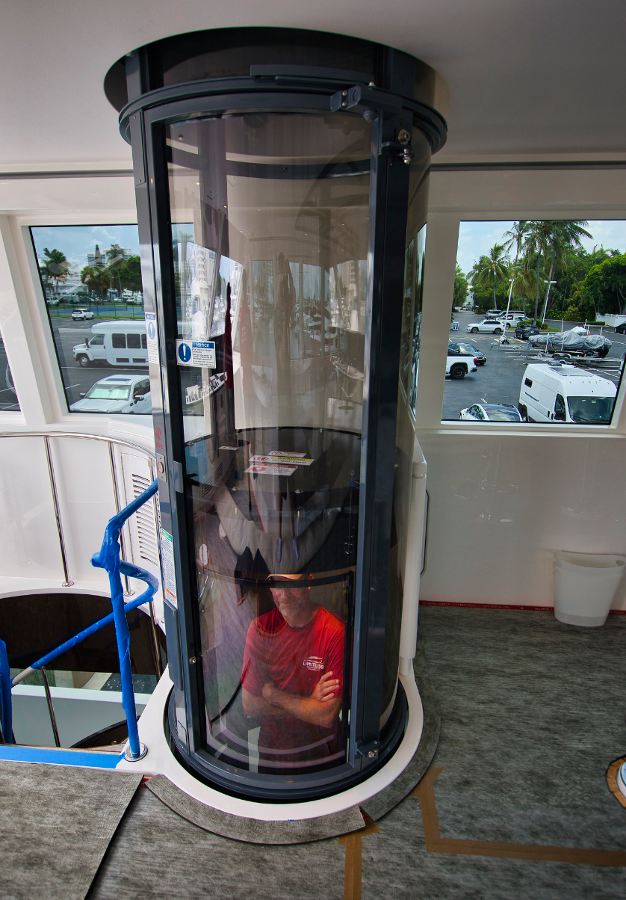When it comes to installing a residential lift, understanding the dimensions is crucial. These dimensions determine the lift’s fit, capacity, and usability within a home. In this comprehensive guide, we delve into the intricacies of residential lift dimensions to help homeowners make informed decisions.
The Importance of Residential Lift Dimensions
Fit and Placement
Residential lift dimensions play a pivotal role in determining where and how the lift will fit within a home. The dimensions need to align with the available space, doorways, and structural requirements of the property. Incorrect dimensions can lead to costly modifications or even prevent installation altogether.
Usable Space
Optimal residential lift dimensions ensure that the lift provides maximum usable space. This ensures comfort and ease of movement for passengers. Oversized or undersized lifts can compromise the user experience, making it essential to choose dimensions that cater to the specific needs of the household.
Aesthetic Appeal
While functionality is paramount, the visual appeal of a residential lift should not be overlooked. Proper dimensions ensure that the lift complements the interior design and architectural aesthetics of the home. Customizable dimensions allow homeowners to achieve a seamless integration of the lift into their living space.
Standard Residential Lift Dimensions
Cabin Size
The cabin size of a residential lift typically ranges from 1m x 1m to 1.5m x 1.5m. This provides ample space for wheelchair accessibility and multiple passengers. However, dimensions can be customized to suit specific requirements and space constraints.
Door Openings
Standard door openings for residential lifts are typically around 0.8m to 1m in width. This width accommodates wheelchair access and ensures smooth entry and exit for passengers. Again, customization is possible to adapt to different architectural and design preferences.
Shaft Dimensions
The shaft dimensions of a residential lift are determined by the cabin size and the overall design of the lift system. Standard shaft dimensions range from 1.5m x 1.5m to 2m x 2m, allowing for smooth vertical movement within the home. Customization options are available for unique architectural requirements.
Customizing Residential Lift Dimensions
Tailored Solutions
Many manufacturers offer customizable residential lift dimensions to cater to unique requirements. This includes adjusting cabin size, door openings, and shaft dimensions to fit specific space constraints and design preferences.
Consultation and Design
Before finalizing residential lift dimensions, it is advisable to consult with lift manufacturers and design experts. They can provide valuable insights and recommendations to ensure optimal fit, functionality, and aesthetic appeal. Advanced 3D modeling and simulation tools can also be used to visualize the lift within the home environment.
Compliance and Safety
Customized residential lift dimensions must comply with local building codes, safety standards, and accessibility guidelines. Manufacturers and installers should be well-versed in these regulations to ensure that the lift meets all necessary requirements and certifications.
Maintenance and Upkeep of Home Lift Dimensions
Regular Inspections
Maintaining optimal residential lift dimensions is not just about the initial installation but also about ongoing care. Regular inspections are crucial to ensure that the lift’s dimensions remain consistent and meet safety standards. Any deviations or wear and tear should be addressed promptly to avoid potential risks.
Upgrading and Modernization
As technology advances, homeowners may consider upgrading their residential lifts to incorporate new features or improve performance. Upgrading often involves adjusting the lift’s dimensions to accommodate new components or systems. Working with experienced professionals ensures that upgrades are executed seamlessly without compromising the lift’s functionality or safety.
Factors Influencing Residential Lift Dimensions
Architectural Constraints
The architectural design of a home can significantly influence home elevator dimensions. Older homes or properties with unique layouts may require customized dimensions to ensure a proper fit. Working closely with architects and design experts can help homeowners navigate these challenges and find suitable solutions.
User Requirements
Understanding the specific needs and preferences of the lift’s users is essential when determining residential lift dimensions. Whether it’s accommodating wheelchair accessibility, accommodating larger groups, or ensuring ease of use for children and elderly individuals, these requirements should be prioritized during the design and customization process.
Environmental Considerations
Energy Efficiency
Residential elevator dimensions can also impact the lift’s energy efficiency. Optimal dimensions that reduce unnecessary space can result in lower energy consumption, contributing to eco-friendly and sustainable living. Manufacturers are increasingly focusing on designing lifts that are energy-efficient without compromising performance or safety.
Noise and Vibration
The dimensions of a residential lift can influence its noise and vibration levels. Proper insulation and vibration dampening measures should be considered during installation to minimize disturbances to residents. Choosing the right dimensions and materials can significantly enhance the lift’s comfort and quiet operation.
Cost Implications of Residential Lift Dimensions
Initial Investment
The cost of a residential lift installation is directly influenced by its dimensions. Larger, customized lifts with unique features may require a higher initial investment compared to standard models. However, it’s essential to consider the long-term benefits and value that a well-designed and functional lift can bring to a property.
Maintenance and Repairs
While customization and upgrades can add to the initial cost, they can also impact ongoing maintenance and repair expenses. Properly designed and maintained lifts with optimal dimensions often require fewer repairs and replacements, resulting in lower long-term costs and increased durability.
Frequently Asked Questions (FAQs)
Q: Can I install a residential lift in my existing home, or does it require significant modifications?
A: Residential lifts can typically be installed in existing homes with careful planning and customization. However, the extent of modifications required depends on factors such as available space, structural considerations, and desired features. Consulting with a professional installer can help assess the feasibility of installation and determine the necessary modifications.
Q: Are there weight restrictions for residential lifts, and do they affect dimensions?
A: Residential lifts have weight capacity limits that vary depending on the model and design. While weight restrictions primarily impact the lift’s mechanical components, they can indirectly influence dimensions by determining cabin size and structural requirements. It’s essential to choose dimensions that accommodate both weight capacity and usability requirements.
Q: How long does it take to install a residential lift, and does customization affect installation time?
A: The installation timeline for a residential lift varies depending on factors such as complexity, customization, and site preparation. Standard installations typically take a few weeks from start to finish, but customization may extend the timeline. Custom dimensions and features may require additional time for design, fabrication, and installation, so it’s essential to discuss timelines with the installer beforehand.
Q: Can residential elevator dimensions be adjusted after installation if needed?
A: In some cases, minor adjustments to residential lift dimensions may be possible after installation. However, significant changes may require extensive modifications or even replacement of certain components. It’s best to discuss any potential adjustments with the manufacturer or installer to assess feasibility and implications for safety and functionality.
Q: Are there any accessibility guidelines or regulations that dictate residential lift dimensions?
A: Accessibility guidelines and building codes may influence residential lift dimensions, particularly regarding wheelchair accessibility and safety standards. It’s essential to ensure that the chosen dimensions comply with relevant regulations to avoid legal issues and ensure the safety and accessibility of the lift for all users.
Q: Can residential lift dimensions be customized to match the home’s interior design?
A: Yes, many manufacturers offer customization options for residential lift dimensions to align with the home’s interior design aesthetics. This includes choosing cabin finishes, door styles, and other design elements that complement the overall decor. Working with design professionals can help ensure a seamless integration of the lift into the home’s aesthetic vision.
Q: What maintenance is required to keep residential lift dimensions in optimal condition?
A: Regular maintenance is essential to ensure that residential lift dimensions remain optimal and that the lift operates safely and efficiently. This includes routine inspections, lubrication of moving parts, and addressing any issues promptly. Professional maintenance services can help prolong the lifespan of the lift and prevent costly repairs.
Q: Are there any energy-efficient options available for residential lifts that can impact dimensions?
A: Yes, many manufacturers offer energy-efficient residential lift options that can impact dimensions by reducing space requirements for mechanical components and optimizing motor efficiency. Features such as LED lighting, regenerative drives, and standby mode can contribute to energy savings without sacrificing performance or safety.








